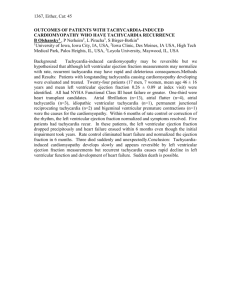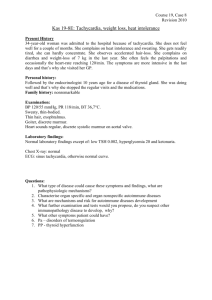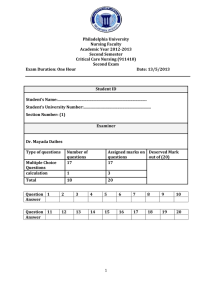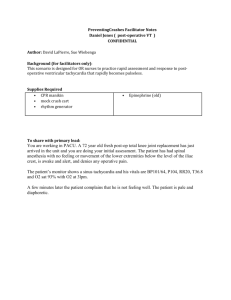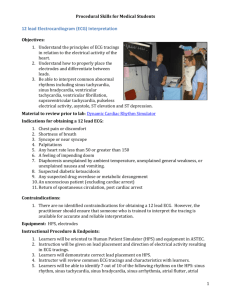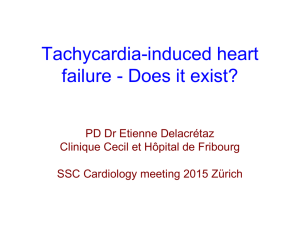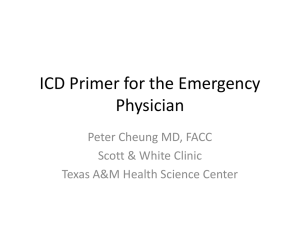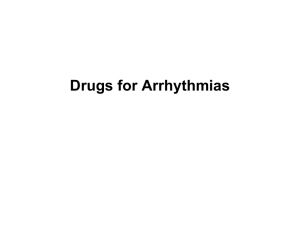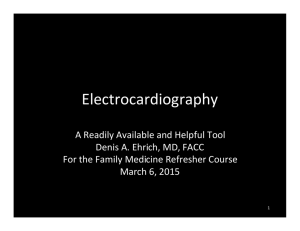an unusual type of short v-v tachycardia
advertisement
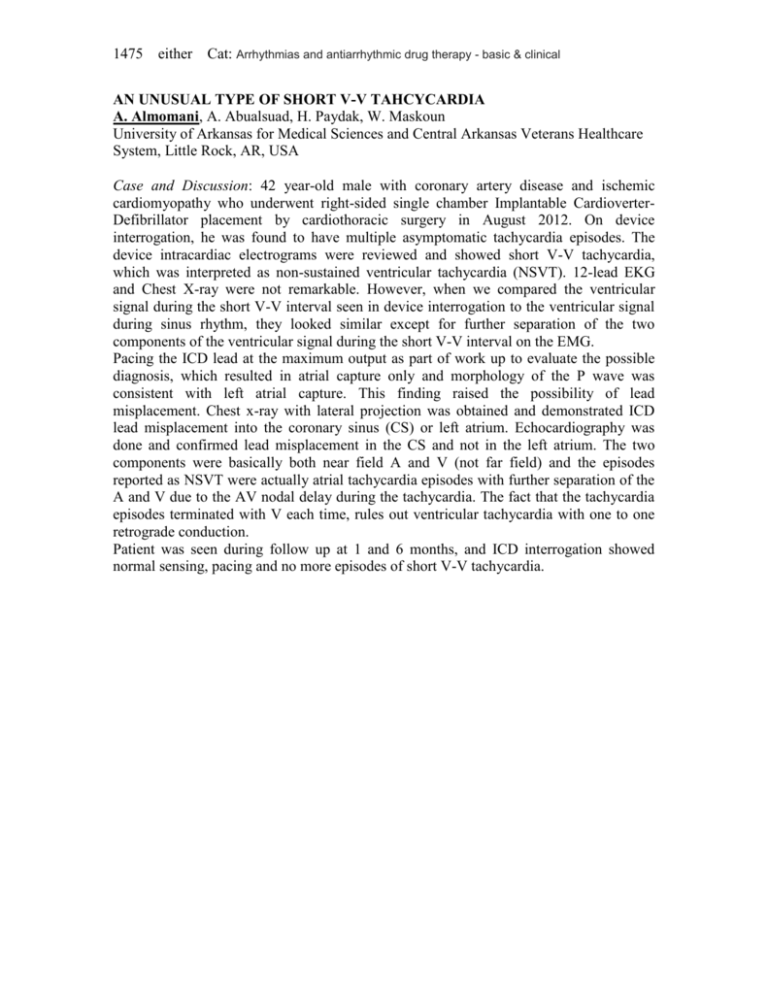
1475 either Cat: Arrhythmias and antiarrhythmic drug therapy - basic & clinical AN UNUSUAL TYPE OF SHORT V-V TAHCYCARDIA A. Almomani, A. Abualsuad, H. Paydak, W. Maskoun University of Arkansas for Medical Sciences and Central Arkansas Veterans Healthcare System, Little Rock, AR, USA Case and Discussion: 42 year-old male with coronary artery disease and ischemic cardiomyopathy who underwent right-sided single chamber Implantable CardioverterDefibrillator placement by cardiothoracic surgery in August 2012. On device interrogation, he was found to have multiple asymptomatic tachycardia episodes. The device intracardiac electrograms were reviewed and showed short V-V tachycardia, which was interpreted as non-sustained ventricular tachycardia (NSVT). 12-lead EKG and Chest X-ray were not remarkable. However, when we compared the ventricular signal during the short V-V interval seen in device interrogation to the ventricular signal during sinus rhythm, they looked similar except for further separation of the two components of the ventricular signal during the short V-V interval on the EMG. Pacing the ICD lead at the maximum output as part of work up to evaluate the possible diagnosis, which resulted in atrial capture only and morphology of the P wave was consistent with left atrial capture. This finding raised the possibility of lead misplacement. Chest x-ray with lateral projection was obtained and demonstrated ICD lead misplacement into the coronary sinus (CS) or left atrium. Echocardiography was done and confirmed lead misplacement in the CS and not in the left atrium. The two components were basically both near field A and V (not far field) and the episodes reported as NSVT were actually atrial tachycardia episodes with further separation of the A and V due to the AV nodal delay during the tachycardia. The fact that the tachycardia episodes terminated with V each time, rules out ventricular tachycardia with one to one retrograde conduction. Patient was seen during follow up at 1 and 6 months, and ICD interrogation showed normal sensing, pacing and no more episodes of short V-V tachycardia.

